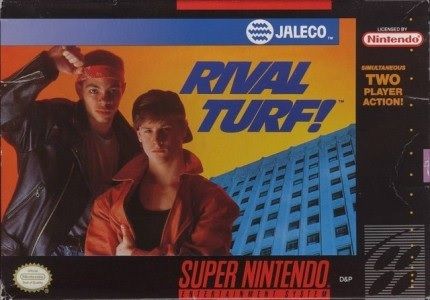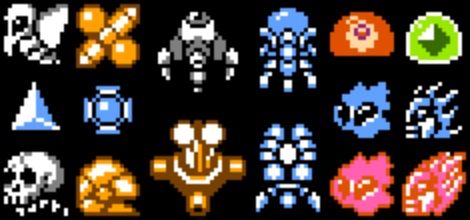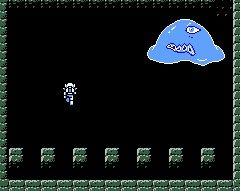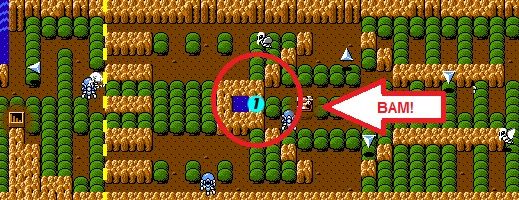Anyway, when an individual wishes to educate the masses about... whatever, one of the most important things to remember is that it's usually beneficial to everyone to maintain a relatively neutral stance. People must be allowed to come to their own conclusions. This isn't to say you should never inject your opinion into a discussion, but, if you do so, then the audience should be allowed to do the same in response to it. As you may have noticed during the video, Anita has disabled comments, statistics, and ratings. In fact, everything she uploads onto YouTube shares this characteristic. While it's true that a viewer can go elsewhere to be heard, minor and unnecessary inconveniences like that one only help to deter others from wanting to hear what she might have to say.
So, now to get into the detailed content of her "research", Anita makes an attack on Nintendo based upon Miyamoto's comment about Dinosaur Planet and upon the changes that were ultimately made to turn it into Star Fox Adventures. I can understand her dislike of that scene where Fox is shown staring up at Krystal as she's trapped inside a giant crystal. It's even mocked (fairly well, too) in a flash collab organized by Kirbopher about various Nintendo games. While Anita probably sees this as more evidence to prove that women are just sex objects or prizes in video games, I'm going to say that it was either a poor attempt at humor (which would explain the saxophone playing in the background) or an early attempt to help quell any insinuations some might have made about four guys spending a great deal of time together in space. After the release of Star Fox Command, we now know better, but, unfortunately, Amanda cannot be unseen.
 |
| Thanks Q-Games. Thanks,Nintendo. |
When Sarkeesian began attacking the old Double Dragon opening and how it has remained unchanged in later recreations of the beat'em up, I found myself asking: "Yeah, why would all these remakes of the same game include the same scene of Marian getting punched in the gut?" Of course, if I'm going to ask that, then I might as well be asking, " Why does Obi Wan have to die at the hands of Vader in every remastering of Star Wars?" The original game came out in 1987. An in-game plot, especially one played in an arcade at the time, needed to be quick and simple. You think I or any other gamer wants to stand there and wait for a five- or ten-minute cut scene to play out that effectively ensures no one will be offended by the content? Imagine if Technos Japan and Taito took that a step further by trying to incorporate the notion throughout the entire game.
 |
| See that? Even generosity offends people! |
Watching a female get hurt, human or otherwise, was heavily frowned upon in the states back in those days. If it did occur, it was at the hands of a villain, and even that was preferably kept at a minimum. Woman abuse in America was becoming a relatively hot topic back in the 80s, so it was probably a better idea to avoid showing images of females getting beaten up to the impressionable youth. Some of those brats might actually think, "Hey, let's pretend we're in this game and start slapping a bitch around!" Kids are idiots. Never forget that! Over in Japan, it didn't seem like the market was all that concerned about allowing their females to get beaten up. Hell, a lot of anime revolves around only having girls fight. This was not something shared by us over in the states, and one of the most well-known examples of this would be Poison from the Final Fight series. Capcom wanted to include a female in the Mad Gear gang, but when Nintendo voiced their concerns for its release in North America, Capcom tried to claim her as being a guy in women's attire. Obviously this wasn't good enough, so both her and Roxy were replaced with male sprites named Sid and Billy. Another example is found in the first American-released sequel to the Super Mario Bros. series. Birdo, as many gamers have noted before, is referred to as a male in the original manual (and labeled incorrectly as Ostro), but is now generally referred to as a female in most other titles, which is reinforced by the use of female voice actors for her dialogue. There is an exception to this in the Japan-only game Captain Rainbow, though I can't help but speculate that this might have been done solely for comedic purposes. If I were to take a guess, I'd say the North American branch of Nintendo didn't like the idea of watching Mario's group repeatedly nail a girl in the face with eggs, turnips, and mushroom blocks until she was literally knocked right off the screen. There are games from that era that feature female enemies, but the actual abuse you inflict upon them is usually no where near as graphic as they would be in a beat-em up or, in Birdo's case, a platformer. One example is Final Fantasy. Two of the four fiends (Kary and Tiamat) that the Warriors of Light must defeat are female, but the only thing we see during combat is a flickering portrait on one side of the screen responding to one of the party members swinging their weapon into the open air. In Battletoads, the Dark Queen's sprite barely moves, and it certainly gives no indication that she's actually been hurt. Whereas striking the final blow on any other enemy sends them blasting off again like Team Rocket, she just floats right back up in the air, says a few things, then goes spinning up into space. Yeah, if you haven't seen it, she turns into a yellow twister, so I'm assuming she spins, but the actual movement is just a single image being flipped horizontally a bunch of times. In her final scene, Trademark doesn't even go that far. The single frame of her twister just slides off the screen as Prof. T. Bird arrives to pick up the toads.
Things changed gradually as the industry entered the 1990s, with titles like Fire Emblem and Shining Force actually showing the female characters being struck, but still resulting in a flickering portrait, and, a few more years later, gamers witnessed females participating in all sorts of titles that provided far more detailed reaction to abuse, like watching Chun-Li flinch when struck, lie unconscious on the ground after being defeated, and sporting a bump on the head during her game over screen. Still, compared to the other portraits, it looks like her pride is hurt more than her actual body.
 |
| Actually, all of these fighters got off lucky compared to poor Blanka. |
 |
| Just look at those eyes. They remind me of a scene from Total Recall. |
Despite having typed all this, I still have no effective explanation for Linda Lash in Double Dragon. The player can clearly see this woman (and her clones) getting punched, kicked, and tossed around like every other gang member they come across. Granted, she's got a bit of muscle (Marian doesn't) and is given a more butch look for the console games, especially in the first sequel, but her sprites are still visibly feminine.
Anyway, I am starting to forget what point I was trying to make, so I'm going to move on to a few exceptions of the trope, something that Anita only provide one of (Super Princess Peach), and only did so to further support her bias against men in the second video.
 |
| Seen here, Peach exhibits four different types of anger, because, just like a real woman, she is never happy. |
Another, slightly newer, example can be seen in Fire Emblem: Path of Radiance. Early into the game, your entire party (including the leader, Ike) is weak and vulnerable with the exception of Deputy-Commander Titania, a pre-promoted knight who not only acts as a life-saver for inexperienced players, but is also a must-have for surviving the Hard and Maniac versions of the first seven to thirteen missions. She is so strong, in fact, that it's recommended for players to remove her weapon until mission five to prevent her from stealing experience points from the rest of your group.
A different sort of exception to the trope is also a feeble excuse for me to include her in another blog entry. Katt from Breath of Fire 2 is a female Woren that your hero must defeat in a one-on-one battle before you can rescue her from being killed by Augus. It's like watching Peach tell Bowser to step aside so that she can fight Mario as the final boss. As the story goes, Katt refuses to believe Rand's story about how the manager of the Colosseum is planning to use poisonous darts to finish her off during her fight with Ryu. As a result, you now have to win the fight and then quickly push her out of the ring before she is hit by one of them. Yes, she is a female, and yes she is saved by a man, but, had she taken Rand's warning to heart, I'm fairly certainly she would have marched into the manager's office and handled the matter herself. Once Katt joins your party, you'll soon discover that she's not only the fastest one in your group, but is also strongest (physically speaking), further reinforcing my belief that any realized attempt at her life would have been met with some rather violent repercussions.
Going back to the video, Sarkeesian goes on to point out, "It's a sad fact that a large percentage of the world's population still clings to the deeply sexist belief that women as a group need to be sheltered, protected, and taken care of by men." So, this is no longer about the trope, but about the view of women across the globe, huh? Well, you know, it's also a sad fact that a large percentage of the world's population is malnourished to the point where statistics estimate that a person will die from starvation every three and a half seconds (according to Poverty.com), but let's focus our attention on making sure the women feel empowered before they starve. If Anita truly cared about the world, she would have given that $150,000 to a non-profit organization like the WFD or maybe even Feeding America, rather than blow it on a series that viewers can't even share comments with her about, because anyone who would leave a comment that disagrees with her work must be without exception a bigot, a troll, or both.
Now, before I end this bit of whining, I'd like to clarify a few things that no one will probably care to read about. Under normal circumstances, I don't mind if a feminist, or any other sort of -ist, makes a video online that might come across as one-sided or just idiotic by the bulk of its viewers. I don't usually care if the person disables all forms of feedback, nor do I spend much time wondering about the money that some are willing to donate to help support these videos. The only reason I can really come up with in an attempt to justify my fascination with Tropes vs Women in Video Games is that it not only includes all three factors of what I just mentioned, but that it was also given considerable attention by a variety of media sources, including The New York Times, Kotaku, The Huffington Post, Gamespot, and Digital Trends, and Anita rewarded their time and effort with a questionable and poorly-researched introduction that would have been a great deal more informative and interesting in the hands of someone who didn't feel the need to risk the validity of the piece by polluting it with their personal agenda.
For your viewing pleasure, a more notable rebuttal to Sarkeesian's first part in this series can be found here, while a parody narrated by Ebolaworld's own Sam T. Nelson can be found here. I deeply apologize to my future self, because I highly doubt anyone else will actually waste their time reading this long and boring piece of crap. Thanks.
**Update**
The continuation of Anita's series doesn't appear to get any better. Rather than point this out myself, Jagos has provided a decent argument against the validity of Anita's series, primarily for its lack of professional research, and supports his own video heavily with links to references. It's definitely worth checking out, though I couldn't help but sense a small bit of arrogance in his words, as it begins to give the impression that he enjoys hearing himself talk. It runs for nearly an hour and a half, includes an intermission for whatever reason, and is interrupted with remarks about how more will be discussed in later videos. He could have reasonably chopped off at least half an hour from Act 1, possibly filling that in with a bit of Act 2, and still have provided more than enough information to support his views against Sarkeesian and her Kickstarter project. Then again, maybe I'm just reading too much into the whole thing. I am guilty of that once a while. It's best to watch it for yourself and decide, because I wouldn't trust my opinion alone on any matter. I'm an idiot.









